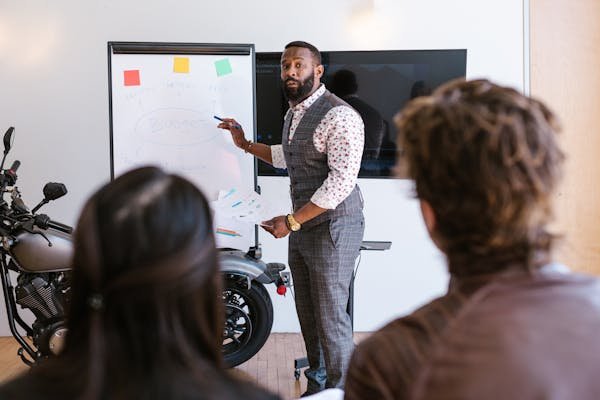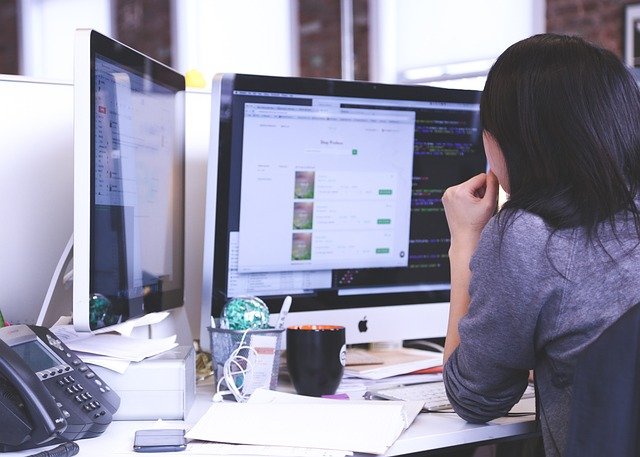Understanding Gamification in Digital Marketing
Introduction to Gamification
Fancy word, gamification, isn’t it? All it really means is sprinkling a little game magic onto stuff that’s not games. Think of it as adding a fun twist to digital marketing. You know, jazzing up customer experiences with stuff like collecting points, winning badges, accepting challenges, and leveling up. This idea’s been around since the 90s, back when digital boom was still finding its feet, but boy has it come a long way. Today, gamification is front and center in marketing plans, all about upping the fun factor so that users not just scroll past but stick around to play.
And here’s a juicy stat – by 2030, this whole gamification thing is projected to hit a whopping $95.5 billion. Yep, billion with a “B”.
Importance in Marketing Strategy
Now, why bother using gamification in marketing? Glad you asked. First off, it’s a superstar when it comes to grabbing eyeballs and making a brand unforgettable. Those game-like bits can grab a user’s attention faster than a cat video, leaving a lasting impression and helping brands become household names (Wikipedia).
Then there’s the bit about making the customer feel special. Take Starbucks, for instance. Their loyalty program is like a gamer’s paradise. It’s got 60 million members and makes up half of their business! That’s a lot of caffeine. And Nike Run Club? They get folks active with challenges, while sneakily collecting all sorts of juicy data on customer likes and dislikes (Landvault).
| Marketing Benefits of Gamification | What’s in it for you? |
|---|---|
| Hype-Level Engagement | Gets customers off the sidelines and into the mix. |
| Brand Party Trick | Leaves a lasting brand imprint when users remember the fun. |
| Insight Goldmine | Snags insights about what floats users’ boats. |
| Perfect Fit Marketing | Crafts custom experiences built on what makes users tick. |
Think of gamification as your secret weapon for building tighter bonds with customers. It’s a game-changer for developers, platform chiefs, and marketing maestros looking to boost downloads and keep folks coming back for more. Want to dive deeper? Check out our talks on gaming marketing strategies and esports marketing campaigns.
Successful Examples of Gamification
Gamification ain’t just a fancy word thrown about—it’s a powerhouse in digital marketing. Look at Starbucks Rewards and Nike Run Club, both showing us how playful tweaks can spark customer interest and glue-like loyalty.
Starbucks Rewards Program
Starbucks has whipped up a winner with its Rewards program. It’s got around 60 million folks signed up worldwide, and it makes up about half of their income—those are some big numbers (Landvault). Back in the day, starting as My Starbucks Rewards, they had about 4.5 million members in 2012. Those loyalty cards? Yeah, they were pulling in $3 billion a year (Yu-kai Chou).
You buy coffee, you earn stars; simple as that. Stack up those stars, and you can snag free drinks or some special goodies.
| Feature | Description |
|---|---|
| Membership Count | 60 million strong |
| Revenue Contribution | Grabs 50% of total business |
| Sales from Loyalty Cards | Adds $3 billion to the pot yearly |
These stars? They’re like gold. People keep coming back, itching to rack up more stars, making them loyal and more likely to stick around.
Nike Run Club Gamification
Nike Run Club has cracked the code on keeping runners coming back for more. Their app ropes in runners with challenges and badges, giving them a pep in their step while keeping Nike on their mind. Plus, it collects info on what users like to do, making their experience personal and all about them (Landvault).
Leaderboards let folks see where they stack up against their buddies. It turns running into a game, nudging friends towards healthy competition. That little nudge keeps them coming back, creating a community that ties users closer to the brand.
| Feature | Description |
|---|---|
| Engagement Strategy | Challenges and badges |
| Data Capture | Tailors experience by user preferences |
Both Starbucks and Nike give a masterclass in using gamification to hold onto customers. They prove that with the right moves, businesses can fire up user excitement and see a boost in growth. Want to know more? Check out our articles on gamified loyalty programs and gaming marketing strategies to get the lowdown on making your own magic happen.
Gamification Strategies in the Metaverse
The metaverse is shaking up how brands do business, creating fresh ways to grab attention and make lasting impressions beyond the usual advertisements. Dive into some of the coolest tools being used: immersive events and virtual hangouts where shopping feels more like play.
Immersive Events
Throwing a bash in the metaverse is a top pick for brands aiming to catch the eye of their audience. It’s like your favorite band playing a secret gig, but online. These digital shindigs tap into playful marketing tricks to pull in people. Picture virtual concerts, product reveals with a twist, or contests with jaw-dropping prizes—participants get to dive right in and snatch up goodies.
These experiences don’t just stand alone—they band folks together into mini-communities. By sprinkling in fun stuff like scoreboards or badges, brands make folks stay, play, and come back for more. Think about a game night where winners snag exclusive game loot or cool real-world merch, turning customers into loyal fans.
| Immersive Event Perks | Good Stuff That Comes With It |
|---|---|
| Fun Gameplay | More users getting involved |
| Scoreboards | Get folks to take part |
| Exclusive Goodies | Brands earn fan love |
Virtual Stores and Experiences
Beyond just throwing a good party, the metaverse is opening up a whole new way of shopping. These digital shops let brands set up in a space where “window shopping” goes 3D. Shoppers can stroll through virtual aisles, taking a closer peek at products like never before. And with friends clicking alongside, it’s like shopping with your besties even when they’re miles away.
Interactive twists can jazz up these stores with puzzles, mini-games, or treasure hunts. Not only is it a blast, but brands also get a peek into what customers really dig. This kind of shopping turns into a fun journey, a lot more than just forking over cash at the register.
| Virtual Store Highlights | Why It’s Awesome |
|---|---|
| 3D Product Walkthroughs | Makes shopping a blast |
| Group Browsing | Bonding time |
| Fun Games | Shopping with a twist |
Playing the game in the metaverse means brands aren’t just another face in the crowd. They spark tighter bonds with shoppers, thanks to the cool tech and creative spins they add to the mix. For more on how gaming powers up marketing, check out our deep dives into video game marketing tactics and esports marketing campaigns.
Leveraging Gamification for Customer Engagement
Gamification in digital marketing acts like a secret sauce that spices up customer interaction and crafts unique experiences. By weaving gaming tricks into marketing, brands can build stronger bonds with their audience. Here, we’re diving into personalization through gamification and the magic of brand loyalty.
Personalization through Gamification
Getting personal is the name of game these days. Gamification lets brands tweak experiences to fit individual tastes and quirks, dialing up user involvement. Take Nike Run Club, for example. They tempt folks with challenges and rewards, gathering clues about their sports habits. This data helps tailor the user’s adventure based on what’s learned about their runs and gym sessions (Landvault).
Adding game-like features to apps or sites strengthens the bond between a brand and its fans. Things like avatars you can dress up, badges for achievements, and custom challenges not only mirror user interests but also pull them deeper into the experience.
Examples of Personalization Techniques
| Gamification Technique | Description | Benefit |
|---|---|---|
| Customizable Avatars | Users can create their own avatars based on personal style | Cranks up engagement |
| Achievement Badges | Recognition for reaching certain milestones | Fires up motivation |
| Personalized Challenges | Tasks tailored to user likes and activity levels | Ramps up participation |
Building Brand Loyalty
Gamification strategies go a long way in building brand loyalty. By creating rewarding experiences, brands can spark a sense of community among their customers. Starbucks, for instance, uses gamification like a pro with its Rewards program, boasting 60 million memberships across the globe. It’s more than a marketing ploy; it’s the backbone of their business strategy, racking up 50% of their sales (Landvault).
Loyalty programs sprinkled with game magic nudge folks back for more. Customers tend to stick around with brands that give them kudos for their faithfulness through points and juicy rewards. This engagement is further juiced up with social features where folks can brag about their rewards, spreading the word and luring in newbies.
Components of Effective Brand Loyalty Programs
| Component | Description |
|---|---|
| Points System | Earn points for purchases and activities |
| Tier Levels | Different goodies based on customer activity levels |
| Exclusive Access | Special deals and products for club members |
To wrap it up, bringing personalization through gamification and revving up brand loyalty are key moves in this marketing playbook. Brands aiming to turn up their digital marketing game should think about sprinkling gamified magic into their gaming marketing strategies for a richer fan experience and lasting bonds.
Gamification in Social Media Marketing
Bringing some fun into social media marketing with gamification is becoming a killer way to grab attention. Below, we dig into two big pieces of the puzzle: teaming up with influencers and getting things to go viral.
Influencer Partnerships
Partnering with influencers is like the secret ingredient in the recipe of digital marketing success, especially when you sprinkle in some gaming fun. By teaming up with popular social media personalities, companies can shine a spotlight on their brands and rake in new customers. Fun fact: Over 50% of millennials take influencers’ product suggestions seriously. When businesses buddy up with influencers who share their vibe, it can create some memorable and fun gaming moments that click with their crowd.
Picture this: an influencer runs a contest or a challenge involving a product, throwing in point scores or badges to jazz things up. This isn’t just about having fun—it builds brand loyalty and forges strong links between the consumer and company.
| Influencer Engagement Strategy | Impact |
|---|---|
| Product Challenges | Engagement shoots up by 25% |
| Interactive Quizzes | Social media shares jump by 30% |
| Gamified Giveaways | Brand awareness soars by 40% |
Viral Marketing Opportunities
Social sites are pretty much made for things going viral, turning small ripples into big waves to reach masses quickly. Gamification can supercharge this effect. The secret sauce is creative campaigns, storytelling with a twist, and fans creating content. Things like points and scoreboards can get people actively playing along, sharing their fun with their friends.
Take McDonald’s Monopoly game, for instance. It pulled folks into their restaurants with the thrill of competing and winning. Campaigns like these can crank up sales and visitors, showing just how game-like marketing tidbits get users all fired up on social media.
The gamification buzz is expected to balloon into a $95.5 billion game by 2030. Marketers are diving into game marketing strategies more often; hence, exploring cool new ways to connect social media and gaming is key.
Getting More Out of Marketing with Fun and Games
Mixing games into your marketing is like having a secret weapon. It grabs people’s attention, keeps them coming back, and gives them a reason to fall in love with your brand.
The Building Blocks of Gamification
Let’s talk about what makes these gamified marketing tricks work so well. Here’s the nitty-gritty:
| Game Element | What it Does |
|---|---|
| Points | Give points for doing stuff; it makes folks want to dive in and keep playing. |
| Badges | Little digital trophies that scream “Look what I did!” to motivate users to do more. |
| Leaderboards | Who doesn’t love a little rivalry? Competing for the top spot can pull people in. |
| Challenges | Set up fun tasks that let users earn kudos or goodies. |
| Storytelling | Spin a yarn that holds attention and makes users feel a part of something big. |
These elements are like magnets, pulling people into your brand’s world (Adact). When folks feel connected, they’re more likely to stick around and engage with your stuff.
Winning with Gamification
The magic of gamification ties back to clear end goals. Whether it’s trying out a service or getting folks chatting, there’s usually something in it for them. Rewards and incentives make the whole journey worthwhile.
Playing this game can be pretty rewarding. Think: more leads, better conversion rates, and more people telling their friends about you (Beyond Fifteen). For example, loyalty programs that feel like a game can get customers hooked and keep them coming back, adding to their value over time.
By focusing on how to get folks involved and steering them toward specific goals, you make sure your marketing isn’t just another blip on the radar. Want to know more nifty tricks? Check out cool loyalty programs and how games can boost your brand.
Data Collection and Analysis through Gamification
Using games in marketing isn’t just fun for your customers – it’s a goldmine for collecting and analyzing data. Smart marketers use this info to get a grip on their audience and adjust their strategies.
Customer Insights
When brands invite play into their marketing, they open doors to understanding their customers’ likes, dislikes, and how they interact with products. By using these fun and engaging tools, businesses can dive into audience demographics, interests, and buying behaviors. Did you know over 64% of business folks use social media to peek at customer habits and desires? Yep, it’s true (Sprinklr).
Data from gamified strategies shines a light on what thrills your customers, how they engage, and which elements grab their attention. This means smarter marketing and happier customers.
| Insight Type | Data Collected | Example |
|---|---|---|
| Demographic Information | Age, gender, location | Tweaking campaigns to suit local vibes |
| Behavioral Patterns | Interaction frequency, time spent online | Fine-tuning when content hits for max impact |
| User Interests | Favorite game types and features | Recommending games that are just their speed |
Personalized Marketing Tactics
Tailoring your marketing thanks to game data is a big win. Businesses can wow visitors with personalized deals reflecting their tastes and behaviors. This personal touch doesn’t just make the user feel special; it directly boosts sales.
Every time a customer interacts with a gamified feature, they generate priceless data. Using that information, marketers sharpen their tactics. Knowing what customers like lets brands shoot high with conversion rates and customer loyalty.
| Personalization Tactic | Description | Benefit |
|---|---|---|
| Targeted Offers | Discounts based on behavior | Drives up sales and keeps the register ringing |
| Customized Content | Bespoke in-game promos | Keeps customers involved and entertained |
| Dynamic Recommendations | Product tips based on likes | Makes users happy and satisfied |
With gamification in the mix, businesses not only understand their audience but can tailor-make marketing to each customer, enhancing efficacy and nurturing long-lasting relationships. If you’re curious about gamified loyalty programs or gaming marketing techniques, dive into those links for more.
Future of Gamification in Digital Marketing
Growth and Projections
Gamification looks headed for massive growth in the digital marketing game. Rumors are flying that this market could skyrocket to a whopping $95.5 billion by 2030. This boom shows just how important gamification is becoming as a secret weapon in marketing plans. More and more, companies are borrowing from game design with stuff like points, badges, surveys, quizzes, and fun little games, all to grab users’ attention.
| Year | Projected Market Value (in billions) |
|---|---|
| 2023 | $11.94 |
| 2025 | $18.2 |
| 2030 | $95.5 |
What’s crystal clear here is that if businesses want to step up their marketing game, they better sprinkle in some gamification magic to keep folks hooked. When you mix a bit of gaming with marketing plans, you don’t just catch eyeballs; you reel in real customers. By using game tricks, cool stories, and rewards, brands create unforgettable experiences that folks just love to talk about.
Evolution of Gamified Customer Experiences
As the future rolls in, the way games are used in marketing is getting even more creative. Gamification is not just a buzzword; it’s a game-changer, turning customer interactions into fun and rewarding moments. Take a leaf from Extraco Bank, which saw its conversion rates shoot up by 700% with an app that dolled out personalized advice and fun surveys to smoothly guide customers to new services.
Gamification isn’t just a one-trick pony—it can handle all kinds of marketing chores, from drumming up leads to pepping up websites and boosting how happy and loyal customers feel. Popular tricks include progress bars, leaderboards, rewards, status levels, and creative ways to gather customer information (Beyond Fifteen).
With data privacy rules shifting, gamification gives businesses a smart way to learn what customers like, minus the third-party cookie headaches (Beyond Fifteen).
In the end, gamification is not just a fleeting trend. It’s a powerful play that’s shaking up how brands interact with customers, making experiences that are fun, personal, and unforgettable. For marketers looking to win over customers, diving into gamification isn’t just a nice-to-have—it’s a must.





















